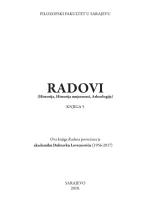
Hasan Škapur, "Odnos osmanskih vlasti prema Bosanskom ustanku (1875-1878.)"
Review of: Hasan Škapur, Odnos osmanskih vlasti prema Bosanskom ustanku (1875-1878.), Sarajevo: Centar za osmanističke studije, 2017, Pp. 470
More...We kindly inform you that, as long as the subject affiliation of our 300.000+ articles is in progress, you might get unsufficient or no results on your third level or second level search. In this case, please broaden your search criteria.

Review of: Hasan Škapur, Odnos osmanskih vlasti prema Bosanskom ustanku (1875-1878.), Sarajevo: Centar za osmanističke studije, 2017, Pp. 470
More...
Review of: Aliye f. Mataracı, "Trade in Wartime: The Business Correspondence of an Ottoman Muslim Merchant Family", Istanbul: Libra Kitapcilik ve Yayincilik, 2016. pp. 1-266.
More...
Being one of the grand viziers of the Selim III era, Melek Mehmed Pasha funcitoned in important duties during the crisis times in the empire. He was married with Zeynep Asima Sultan and became groom in the palace. He was appointed as a Grand Vizier when he was 73 years old and stayed 2,5 years in the duty. Because of the his old age, he was removed from the duty and died after 7 years in Ortaköy. There ara no specific studies about Mehmet Pasha who discharged important duties and found vaqfs. A short Mehmet Pasha’s biography will be given and his vaqf services and their incomes in order to support charities be analyzed in this study.
More...
During the first years of Turkish Republic, Erzurum was one of the most significant cultural centers of Eastern Anatolia, as it was throughout the history. Despite all the deprivations which resulted from the World War I and Turkish National Struggle, the city contributed not only to the national resistance groups (Müdafaa-i Hukuk Cemiyetleri) but also to the establishment of cultural societies. The organization of teachers which started in 1908 during the Ottoman Empire under the name Encümen-i Muallim (The Council of Teachers) continued to function with different names until the first years of Turkish Republic. This initiative that was institutionalized with “Türkiye Muallim ve Muallimeler Dernekleri Birliği” and named as Türkiye Muallimler Birliği in its general congress of 1924 had a branch in Erzurum called Erzurum Muallimler Birliği. Erzurum Muallimler Birliği carried out important functions both in socio-cultural and economic fields, but it turned to a federative organization as Türkiye Muallimler Birliği transformed to confederation in 1928. This research analyzes the organization, activities and the subjects of the periodical (Muallimler Birliği) of Erzurum Muallimler Birliği.
More...
In this research, Manisa foundations’ institutions are dealt with according to accounting records belonging to foundations that were established in the central Manisa from the first quarter of the 18th century to the end of that century. In the research, court registers numbered 187 (1726-1727), 194 (1762-1777), and 211 (1778-1795) have been used. The records in the mentioned registers belong to the cash accounts. What sort of foundations were founded in the city and how much property these foundations had is revealed as specified in the foundations’ accounting records in the court registers numbered 187, 194 and 211 belonging to the beginning, middle, and end of the century. The foundations in the accounting records have been classified according to their types and they have been presented in charts. As a result, thanks to the records belonging to three different dates, the number of the Manisa foundations in the 18th century has been approximately revealed. The accounting records have manifested that most of the foundations were cash foundations.
More...
This study is about Ibn Melek and his family who were among the leading figures of the Beyliks era subsequent to the fall of the Anatolian Seljuk State. Having lived in 14th and 15th centuries in the Principality of Aydin, the members of this family dwelled in Birgi and Tire, the counties of İzmir in the current administrative division. Although this family lived in the Principality of Aydin, they also became highly influential in the scientific and intellectual life of Ottoman State which would later dominate the whole Anatolia. While the works written by Ibn Melek were studied in the Ottoman madrassas as textbooks, the works written by his brother, Abdulmecid Feriste, took their place as valuable sources of reference on the doctrine of Hurufism in the larger society. To that end, this study sheds light on the valuable historical experience of Ibn Melek and his family as significant historical figures, and the written works left by the members of this family are investigated.
More...
In this study, the settlements and districts of Nigde Province during the 15th century are reviewed. Nigde was under the rule of Karamanids for a long time during the 15th century, and in the second half of the century, it fell under the rule of the Ottoman Empire. The districts of Nigde were identified through the cadastral record books and charter of pious foundation certificates drafted by the Ottoman Empire at the end of the 15th and the early 16th centuries. It is considered that the district names mentioned in these books existed during the rule of Karamanids. The first source referring to those districts in Nigde is the charter of pious foundation of Ali the Karamanid dating back to 1415. There are three district names in this charter, yet they seem to be unmentioned in the other sources cited in this study. In charter certificates prepared in 1476 and 1483 after the province came under the rule of Ottoman Empire, there are references to some mosque and district names belonging to Nigde. Moreover, the cadastral record books prepared in the early 16th century refers to some 29 districts in Nigde. Except for some of the district names specified in the aforesaid cadastral record book, most of the names existed to a great extent in also the Karamanid era. In the cadastral record book drafted in the early 16th century, two non-muslim districts are identified and it is possible that these districts also existed during the 15th century.
More...
The basic principles of the governmentality is one of most prominent topics of the Ottoman political writers. Because of the continuing growth and empowerment of the central bureaucracy, the principles which represent the professional values of the bureaucrats have found a place in the nasihatname writings. Per nasihatname writers, the Empire should have been governed in accordance with the suggestions of the educated and wise advisors. In this regard, the concepts of wisdom, which have deep roots in the Turkish government tradition and political Islamic thought, had been re-evaluated and presented as the key of the success in the political texts of the Ottomans. This approach gained an institutional base in the Tanzimat period, and the Empire started to be ruled by the councils of the professional technocrats. In this context the central role of the bureaucrats constitutes the bridges between the traditional Ottoman reformist thought and Tanzimat movement which was influenced by the international rivalry. In this way, the tradition of consultation which has deep roots in the Ottoman political thought played an important role in the 19th century transformation of the Empire.
More...
In the post-Second Constitutional period every area has experienced a revival, along with the political arena. Many associations, clubs and societies have been established in different categories for various purposes in political, social and economic areas. Some of the foundations are related to sports. The application areas of traditional sports branches such as wrestling, riding, javelin and archery which was being practised with the support of foundations and state, have been narrowed considerably as a result of Constitutional regulations. In this process, the western influence began to appear in the sport as well as in other areas with the intensification of relations with the West. Therefore, modern sports began to enter the country during this period. The sports, initially adopted by minorities and later by Turkish youth, especially football, started to be practised under the roof of clubs and associations after the declaration of Second Constitutional Monarchy in 1908. In different cities of the country, sport related clubs and associations were established. In this area, the most concentrated place for such activities was İstanbul because it was the capital city and had population diversity. The names of the associations, clubs and societies related to sports established in Istanbul during this period, their establishment dates and aims constitute the subject of the article.
More...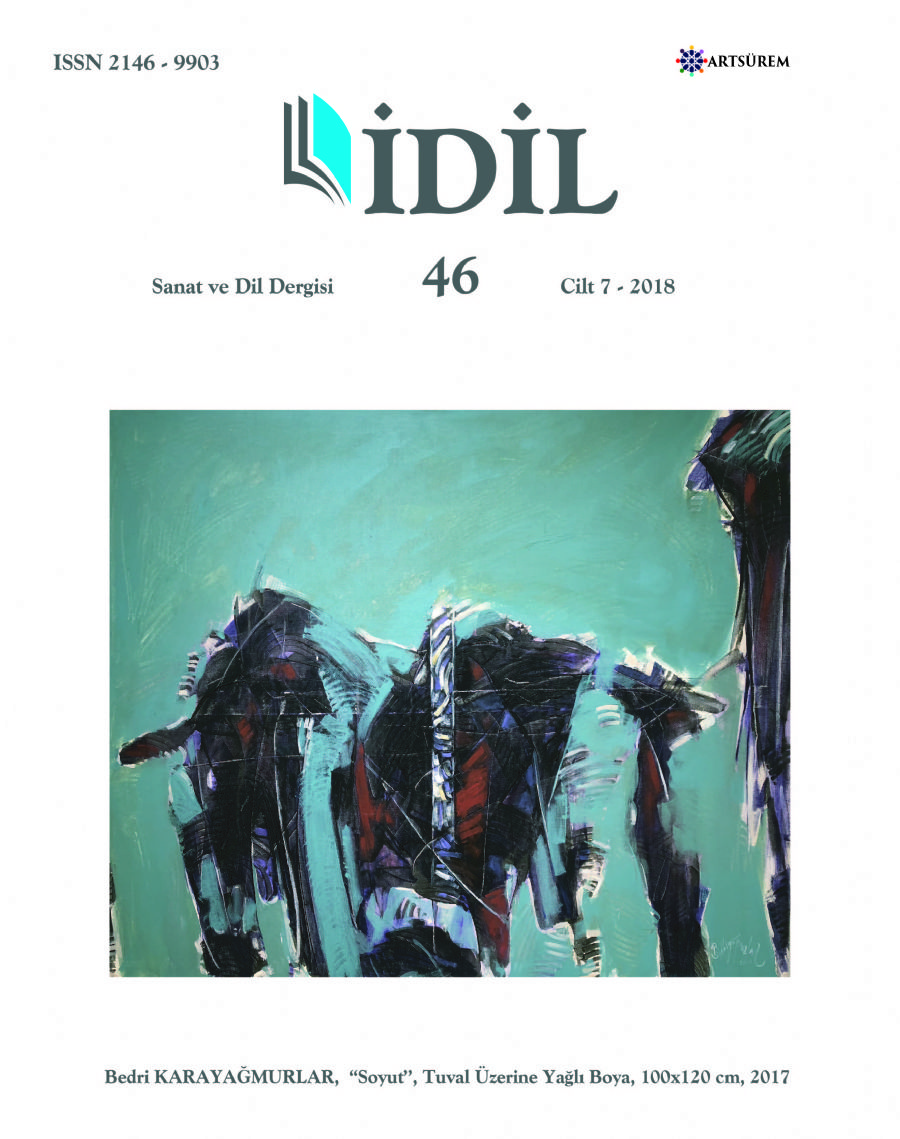
Stamp is a valuable paper which various images, figures, and motifs that represent the dominant country’s where stamp belongs to, political, cultural, historical events, fine arts, geography, etc. , are printed on its frontage, a special glue is spreaded on its back face, mostly square or rectangle, but also can be prepared in the shape of triangle, hexagon, round, etc., and situated ın various sizes. At the same time, stamp is a collection and communication tool, in this sense it is a cultural promotion material. In modern days, the stamps which are produced in different areas, purposes, and topics, are used as valuable paper status which its printing and sale is planned by the states. One of the topics that are placed in the produced stamps, is “Woman”. The purpose which in this study, is to analyze woman facts that are placed in some stamps, from Ottomans to nowadays. The stamps up to the date on which the first survey was made were examined and the use of the female according to years was assessed visually and subjectively According to this; in general the woman’s maternal role is held in the foreground, At the same time some of the stamps include important woman personalities’ who left a mark in the stage of history, portraits, some other ones include woman figures that were and still are approached in social roles. At the same time, the approached stamps present sections from daily life with the design characteristics that stamps have.
More...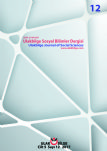
Many societies have given a variety of functions colors. Colors form different layers of meanings in each society. Societies giving these meaning World to colors result from their both historical and cultural savings. Ottoman Empire, having sheltered a lot of elements, had a very diverse structure. It also show its governmental structure and diversity in literature. Ottoman society is reflected to Ottoman poetry in either direct or indirect ways. The most important element that is processed in Ottoman poetry is culture of color. The diverse structure of society provided to give different meaning to colors. İt’s highly possible to see that Ottoman poets used these meaning differences in their poem. Poets didn’t use colors in a monotonus way in their poetry. They included the colors to their poems by giving them both sybolic and fictitious functions. They, sometimes, directly used the colors names and sometimes by using elements that would evoke the colors. The poets using the colors in their poem like this brought about a harmony in their Works. With the usage of colors, these harmony become more vivid and fluent.
More...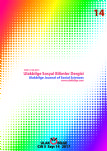
The military reform and transformation which started in 16th century affected weapon and battle order of Ottomans and Mamelukes just like many other armies. The Ottoman Empire, which became a rising force in Anatolia, the Balkans and the Middle East, organized military expeditions on Iran and Egypt in order to eliminate the possibility of getting attacked from the east while conducting military expeditions to the west. The Ottoman Empire, which kept up with modern fire weapon technology on the battlefields in the military expeditions conducted, developed new technologies and production methods which would harmonize fire weapons with its army. However, in view of the Ottomans following these developments, it would be a big mistake to think that the Mameluke State, which faced the threat of Portugal and Rhodes was indifferent to firearms. Although the Ottoman Army used cannons and rifles for offensive purposes in the attacks towards the West, the Mamelukes, which was a regional state, used said weapons for defensive purposes and established their battle organization within this direction. Another issue which is not addressed much in existing works is that concept of intelligence was the primary factor which won the Ottomans the war. As a matter of fact, Selim I learned about the plans of Tuman Bay in Cairo thanks to the intelligence network. Apart from all these developments, when we look at the state organizations of two states rather than their millitaries, it can be seen that Ottomans had a more centralist structure compared to the Mamelukes.
More...
The topic of this article is the usury labelled as murabaha in the Ottoman Empire between 1848-1864. Examining the effects of usury activities on society, we will explain how usury led to emergence of social tragedy. Usurers known as murabahacılar practiced usury arbitrarily and this was why Ottoman subjects experienced injustices. This arbitrariness caused proclamation of usury regulation in 1848. Although Ottoman aimed to remove injustices with this regulation, they did not succeed in that because officials neglected their duties. For this reason, the second usury regulation was announced in 1864. However, this regulation could not solve the problems of the people who became indebted with high interest rates. In this context, this article argues that usury led to emergence of a social tragedy.
More...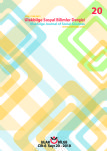
Nowadays it is remarkable that history has been reinterpreted and retransmitted by means of visual elements or organizing discourse. Cinema is recognized as one of the most efficient means of communication and representation in the creation of collective memory and also among the types of films documentaries are accepted as the most important type in the creation of the collective memory.When focused on documentary films about historical issues and events, it can be observed that collective memory is created through messages and information is given to present and future generations. In this context, historical documentaries can be seen as an important instrument within the scope of collective memory. Historical events are revealed by means of documentary film narratives, collective memory is kept alive and this seems to be worth considering in the context of the creation of collective memory.This study covers reconstruction of the history through documentaries, reminding of past with rhetoric and creation of collective memory and keeping it alive. Our aim in the sample of "Abdülhamid II." documentaries is to display the period of Abdulhamit with a new and different perspective that collective memory was created through these documentaries. "Abdülhamid II." documentaries and their rhetoric are taken as an example in this study and from the viewpoint of Fairclough, Wodak and Dijk critical discourse analysis has been done and in this context it is claimed that collective memory is created in documentaries.
More...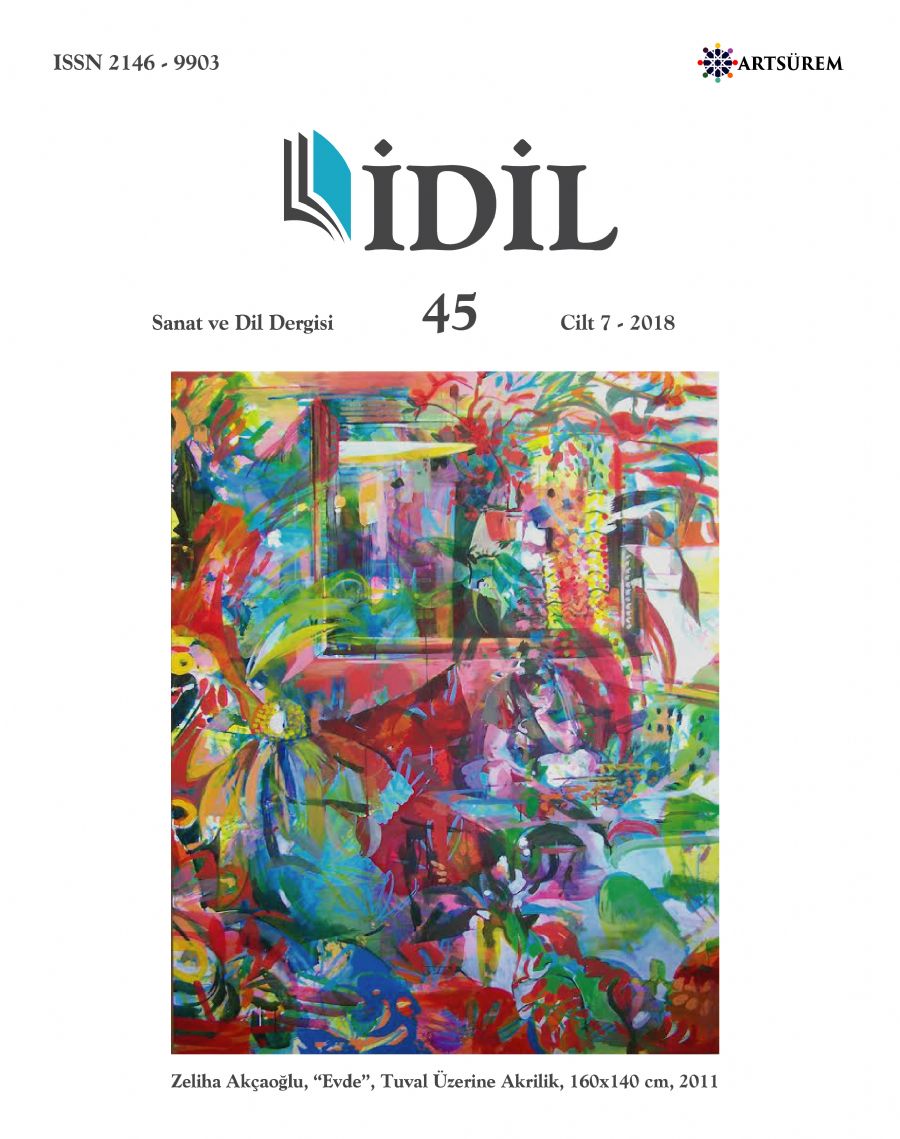
Among the needs of Ottoman Palace, rugs as well as clothes and upholstery fabrics occupy a remarkable place. Of the Ottoman Palace rugs and carpets, not much have survived to the present day. The rugs and carpets have got their own material, pattern, color and technical structures. Their pattern and color characteristics resemble other woven and embroideries of the Palace which were then trendy. Mostly floral figures and symbolic motifs and to a lesser appeared geometrical forms were depicted in these rugs and carpets. Patterns were used to be created in Nakkaşhane (pattern drawing workshop) of the Palace in this period. The motifs drawn in Nakkaşhane would be shaped depending on the object they were applied. For instance, the motifs with curved lines will be applied on Çini, and then the image of motif appeared almost identical to its original shape. The same motif is going to be angled in rugs and carpets depending on the density of warps and wefts in unit area. The motifs in court style are not in systematic structure exists as seen in Anatolian rugs and carpets. Anatolian motifs, though floral, are stylized in geometrical forms and therefore are countable and they can be memorized. On the other hand the motifs of court carpets which are repetitive on the surface cannot be memorized. In order to shorten weaving time and for convenience, the patterns are simplified and little details are avoided. According to the relevant literature, the carpets of court would be laid on the ground of Sultan’s marquee when his army set out for military action. These would often make of one single piece and larger size. In this article, some examples on motif and figures of court carpets are presented.
More...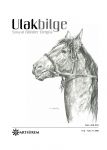
The nationalist movements and colonial ambitions of the Western Powers on the Balkans and North Africa paved the way for the failure of state authority and insurgence of local folk. The claims of Western powers on the Ottoman Empire and their colonial designs were resulted with their support on nationalist movements. Their claim about Ottoman backwardness and their duty on “bringing civilization” for the local people had become an instrument for their ambitions on the region. In this regard, Italy which wanted to take a share on colonial race among the European Nations declared itself as the heir of Great Roman Empire and claimed and invaded the Northern Africa which was a part of ancient Cartage”. Our topic in this regard concentrate on the issues and procedure of the Trablusgarp War. Because of this, it is important for the evaluation and understanding of the Trablusgarp War
More...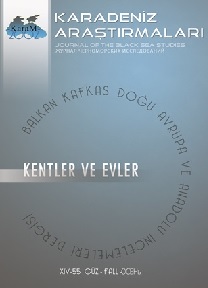
Having been appointed by the Ottoman Sultan Murat IV as the khan of Crimea, Inayet Girai Khan ruled over the khanete throne for over two years in 1635-1637. Many significant events occurred during his reign, which was very short. Renouncing his commitments to the Ottoman Sultan, Inayet Girai Khan started to carry out an independent policy. In this direction, he attacked Kaffa, Which was located within Ottoman territory, in order to grasp the whole Crimea control; and he captured this land even for a very short period of time. He then attacked Kantemir Mirza who was the beg of Mansuroglu clan of Nogays settled in Budjak region which was under his rule. Being pardoned by Murat IV for these actions, Inayet Girai Khan in order to ask the Sultan's forgiveness went to Istanbul and in presence of the Sultan, he was found guilty and strangulated. This study aims to shed light on the reign of Inayet Girai Khan and to show how the relations between the Ottoman State and the Khanete of Crimea were shaped and to explain the effectiveness of the clan aristocracy which had great weight on the administration of the Khanate of Crimea.
More...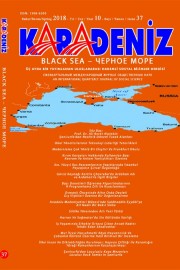
A group of Russian artists took great interest in the culture of Turkey and came to this country. Russian artists, who visited Istanbul, paid special attention to the Ottoman Palace, the surrounding area, the monuments from the Byzantine and Ottoman periods. This article studies the details of the interior and exterior of the settings in the works of such Russian artists as K.P. Bryullov, I.K. Aivazovsky, A.P. Bogolyubov and M.N. Vorobyov, dedicated to the theme of Ottoman Istanbul.
More...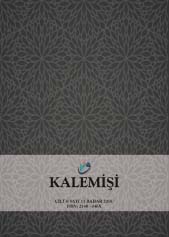
During the period from the foundation of the Ottoman state to its demolition, the art of ceramics, which is known to be produced continuously, owes its existence to the existence of three important centers. Among these centers, Iznik, Kütahya and Çanakkale continued the art of ceramics without any interval and left many rare works on a daily basis. Ceramics in the Ottoman state consists of producing works of quality that will meet the needs of the day. Among the forms that are produced, perhaps one of the most needed forms is the bottle, which is the subject of even the miniatures of that day. Firstly, the bottles seen among the İznik ceramics have continued to be seen among the Kütahya and Çanakkale ceramics by embracing different appearances and maintaining their development by adding different features.The aim of the study was to determine the locations of bottles produced in Iznik, Kütahya and Çanakkale, which are known as the three important ceramics centers of the Ottoman State during the period. Bottle shapes produced in the designated centers were generally given the development process in Ottoman ceramics and different forms were introduced and grouped.
More...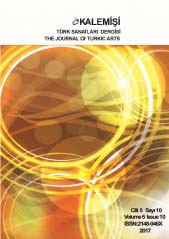
In the rhetoric books are described literary arts under the ‘muhassinat-i lafziye and manewiya’ called with examples. In the section of bedi of this books literary arts has been described. In this books metonymy, metaphor, simile, allusion is described in the beyan part. Consisting of bedi, beyan, meani sections in the number of rhetoric books there has been a significant increase after the Tanzimat. The source of rhetoric books Siracuddin-i Sekkaki's Miftah and its summaries and commentaries has been. However, many new art are included in Miftah's commentaries and summaries. Although some rhetoric books have attempted to present their own descriptions and classifications, they have not usually gone beyond the main source. One of the literary arts located in rhetoric books also is istitba. This art has with this name in the Miftah and in its commentaries; however in some books has with name idmac. The fact that this art is included in only two of the Ottoman rhetoric books causes it to be regarded as an art that is not considered very much. In this article art of istitba will be examined in comparative form in the books of rhetoric.
More...